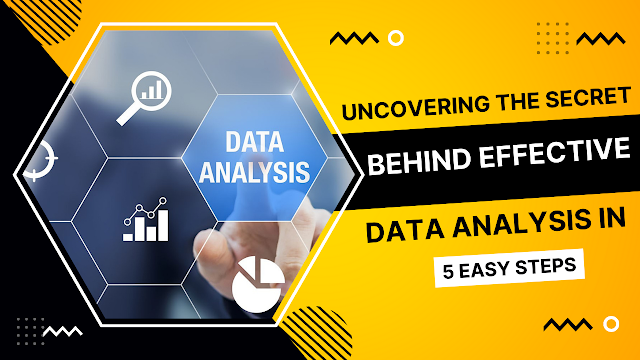As with any other task, there are specific steps you can take to ensure that you are analysing data effectively and getting the results you want to see. Whether reviewing survey results or planning your marketing strategy, it's important to understand how to analyse data to know what it's telling you and which parts are most relevant. This guide will help you uncover the secret behind effective data analysis in 5 easy steps so that you can transform your data into meaningful insights.
5 Effective Steps to Analyse Your Data:
1. Define a Clear Set of Goals:
Before starting data analysis, it's important to define a clear set of goals. Without these goals, it isn't easy to know when you've completed your analysis or what success means for your project. If you don't clearly define and track your objectives, it's impossible to determine how well data analysis will work. That being said, your goal shouldn't be to learn more about your market shares and investments. It should be about growing your business and identifying the gaps in the current process by analysing your customers' needs and expectations.
2. Collecting the Correct Type of Data
To ensure you can analyse your data effectively, ensure you're using reliable and valid data. It will ensure that your results are accurate when analysing results. Three main data analysis methods are used for this: qualitative, quantitative and mixed. Quantitative is most commonly used in market research as it allows you to record numerical information about a target audience which you can then analyse more easily. For most of students it is easy to hire dissertation writers rather than working on the data analysis on their own.
3. Set up Metrics:
Measuring success is the key to effective data analysis. If you can't gauge your progress, you won't know whether what you're doing is effective or not. When designing metrics for your data analysis, it's important to first identify your goals and benchmark against competitors or prior performance levels. After that, ask yourself these three questions to determine which metrics are most appropriate: Are my metrics quantifiable? Can I track them easily? Do they represent my business goals accurately?
4. Analyse your Data:
Effective data analysis requires getting a large volume of information into a usable form. Microsoft Excel has many templates that can help you sort and analyse any type of information, whether financial or otherwise. Some even include macros that can automate some tasks, allowing you to focus on results instead of formulas.
5. Data Visualization And Interpret Results:
Look for patterns, anomalies, and other insights through visualisation. From there, you can start developing trends and drawing conclusions that you can act on. Remember that effective data analysis is not just about numbers; it's about interpreting them to help you make better decisions.
Conclusion:
You can apply the above-given techniques to make the lengthy data analysis process easier and more effective. You will be able to convey information more clearly and be better positioned to make effective decisions. You will be better able to complete your data analysis process way before time. Best of Luck!
Author Bio:
Robert Fawl is a professional Content Writer based in London, UK. He is an author and blogger with experience in writing different academic assignments. If you need dissertation writing services to write your dissertation, you can contact him.

Explore the connection between the Illuminati and the New World Order.
ReplyDeleteVisit Now!